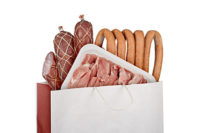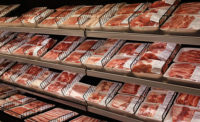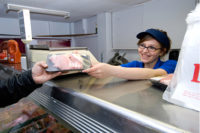Vacuum packaging is a vintage format that has aged well over the decades. Time and again it has evolved, remaining relevant to ever-changing marketplace whims and needs and delivering real value in many ways.
Our attention to packaging usually goes straight to material development and innovation because technology is exciting and fun to talk about. But presently that’s not the case with vacuum packaging, according to a source. “I think the focus is on automation upstream and downstream on processing lines. Labor is in short supply, and the pandemic just accelerated that focus.”
Processors are driving the transition, learning from hard lessons taught over the last two years. “Most of the traction right now is in loading,” the source points out. “There are a lot of people working on automation solutions.” Clearly, loading technology has been around for years, but now the thinking is that a higher level of sophistication is needed in the integration of vision systems technology and robotics. The post-vacuum process represents yet another area where automation can deliver value through weighing, tagging for traceability, and putting product into shipping cartons. Progress may seem glacial sometimes, but the supply chain appears to be pulling in the same direction on this one.
Another more publicly visible and steady complaint swirling around vacuum packaging lands squarely in the recycling discussion. Most barrier materials are still multi-layered structures and difficult to recycle. Our source sums it up this way: “There’s no magic material that is fully recyclable, monolayer, and has all the key performance attributes in terms of oxygen barrier, abuse resistance, and other vital properties.” He points out that what is often lost in the environmental furor is packaging materials have evolved to the point where they provide the maximum performance for the minimum cost. Changes to the material are going to affect both the cost and the performance and, generally, few in the supply chain are willing to pay more for it. It’s a classic dilemma.
There is, however, a hopeful sidebar for vacuum packaging recycling. Without getting too deep into the weeds, he explains, “You must realize that there is no recycling infrastructure that will handle post-consumer crude packaging materials. The focus is more on doing chemical recycling of material through a pyrolysis process (decomposition brought about by high temperatures) that breaks down the polymers into their base chemicals, and those chemicals are reprocessed to make new polymers. Chemical recycling is probably the closest thing to reality today.” It’s encouraging news, but let’s not get over our skis. Because of the considerable investment required to achieve any scale, this must be a corporate effort. There are several start-up companies out there, but none are recycling on a large scale.
In addition to vacuum packaging’s automation and recycling touchpoints, one veteran retail observer offers an intriguing marketing perspective for vacuum shrink bags. He believes there’s an opportunity for smaller bags that has not been exploited to its fullest. He uses chuck roasts as one example. “Retailers already buy a lot of chuck rolls in bags as primals that are then cut into small portions, store overwrapped, and displayed in the meat case. Why not buy those smaller portions case-ready, in vacuum bags, and take advantage of the vehicle bags provide for eye-popping graphics that help to sell the product? You could include cooking method suggestions – slow cooker, oven – plus additional suggestions for the whole meal.” He points to graphics’ role in the growth of frozen seafood products when they went to gusseted standup pouches with powerful graphics. “If a shopper’s going to spend $20 or more for a 3-pound chuck roast, you want them to have a great experience and not sweating it out if the roast sits at home in the refrigerator for a few extra days. The quality of the meat in a store-wrapped package is not going to be as good as it would if it were in a vacuum bag.” Admittedly, what he describes is happening in the marketplace, but he thinks they’re only scratching the surface of the program’s potential. “The key is, is there enough demand from retailers? It’s the age-old dilemma of getting processors and retailers together for a solution. We have all the parts. Graphics. Smaller bags. And the benefits of extended shelf life for shoppers on the back end in their refrigerators.”
Commercial vacuum packaging traces its roots back over three-quarters of a century. But its impact and reach may be greater today than those early days of revolutionizing whole-turkey packaging. Stay tuned.




